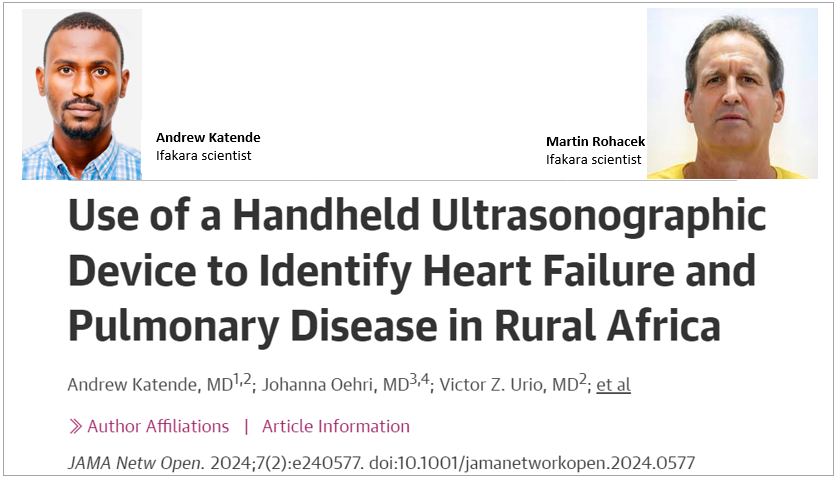
INNOVATION: Portable device for detecting heart, lung diseases

The use of handheld ultrasonographic device has shown promising results in identifying heart and lung disease, scientists have confirmed after conducting a cross-sectional study in rural Tanzania.
The study, which involved clinicians trained in lung ultrasonography, demonstrates that these devices when used in addition to traditional methods like history and physical examination, can effectively diagnose cardiac and pulmonary diseases in patients.
Published in the JAMA Network Open journal, the study aimed to assess the ability of primary care clinicians in rural Africa to use handheld ultrasonographic devices to accurately diagnose heart and lung conditions compared to expert sonographers, and senior physicians.
Ifakara, Swiss TPH lead study
Led by Ifakara Health Institute and Swiss TPH scientists Andrew Katende and Johanna Oehri – both co-lead authors, the study stands out as the first in sub-Saharan Africa to compare the agreement of handheld ultrasonographic devices used by clinicians with expert sonographers using high-end machines, providing valuable evidence for their use in rural settings.
Agreements in diagnostics
Results showed a substantial agreement of ultrasonographic findings between clinicians using a handheld ultrasonographic device and expert sonographers using a high-end ultrasonographic machine, reports the scientists.
“This cross-sectional study showed substantial agreement for most pathological lung ultrasonography findings between experienced sonographers and clinicians who received a 2-hour instruction and three 2-hour sessions of clinical training in the use of a handheld ultrasonographic device.”
“Between clinicians, expert sonographers, and senior physicians, there was substantial agreement in diagnoses of heart failure (85%), moderate agreement in the diagnosis of tuberculosis (78%), but only slight agreement in the diagnosis of pneumonia – a 50% for viral pneumonia and a 56% for bacterial pneumonia.”
Hundreds of patients enrolled
This cross-sectional single-center study was conducted from February 1, 2022, to April 30, 2023, at the St Francis Regional Referral Hospital (SFRRH) located in Ifakara, in rural Tanzania, involving 438 patients aged 5 years or older with respiratory symptoms.
Participants underwent a comprehensive evaluation process, including medical history assessment, clinical examination, lung ultrasonography performed by both a clinician and followed up by an expert sonographer, chest radiography, and final evaluation by senior physicians. Additional tests, such as echocardiography and tuberculosis testing, were conducted as deemed necessary by a physician.
Primary care clinicians successfully received specialized training, including instruction sessions and clinical practice, totaling six hours, to proficiently operate handheld ultrasonographic devices. Expert sonographers, certified in the field, conducted the follow-up ultrasonography using high-end equipment.
Implications to rural healthcare
The findings of this study suggest that handheld ultrasonographic devices, when used in conjunction with clinical examination, could significantly support primary care clinicians in diagnosing cardiac and pulmonary diseases in rural sub-Saharan Africa. With the potential to bridge the diagnostic gap, especially in resource-limited settings, this technology has the capacity to enhance healthcare delivery and improve patient outcomes.
In conclusion, the scientists suggest that handheld ultrasonographic devices, when used alongside clinical examination, can aid clinicians in diagnosing cardiac and pulmonary diseases in rural sub-Saharan Africa. The findings support the potential use of these devices in triaging patients in remote areas, facilitating timely referrals or local treatment decisions based on lung ultrasonography findings.
Read the publication here.
